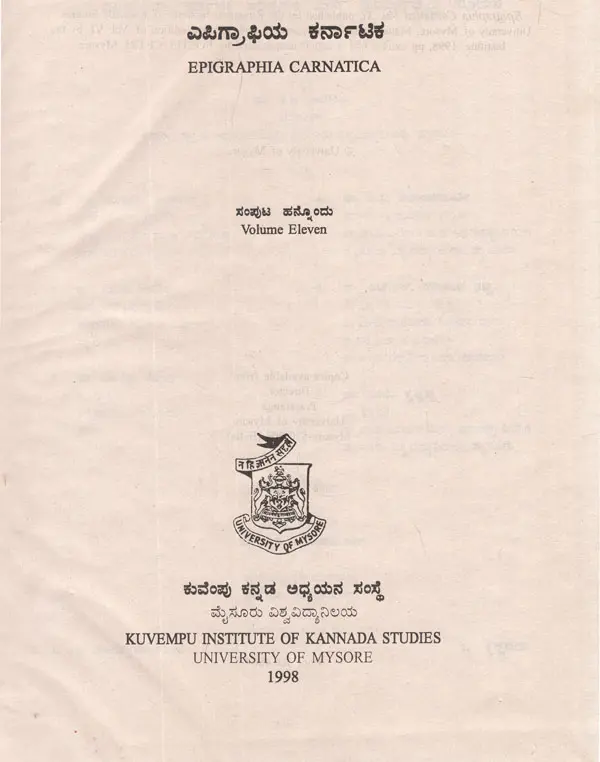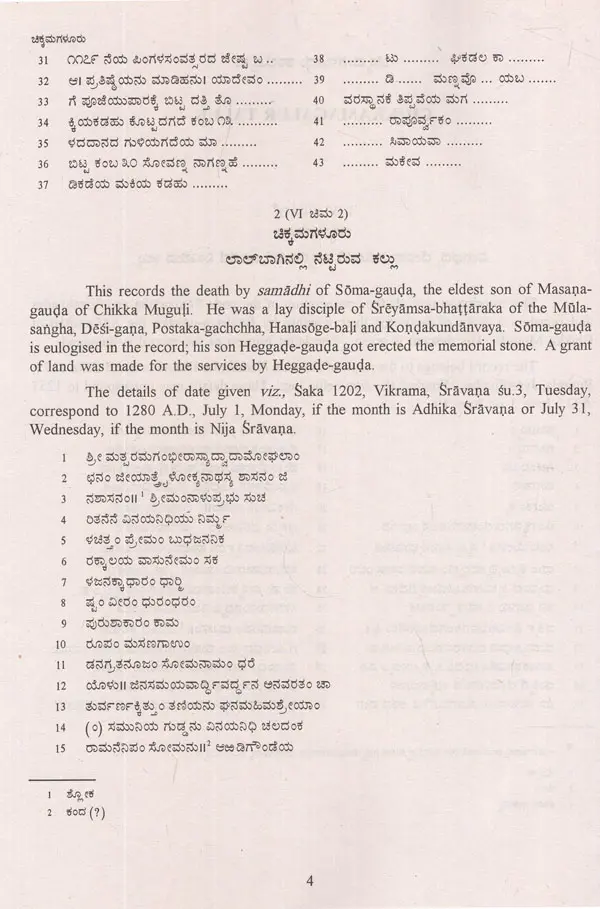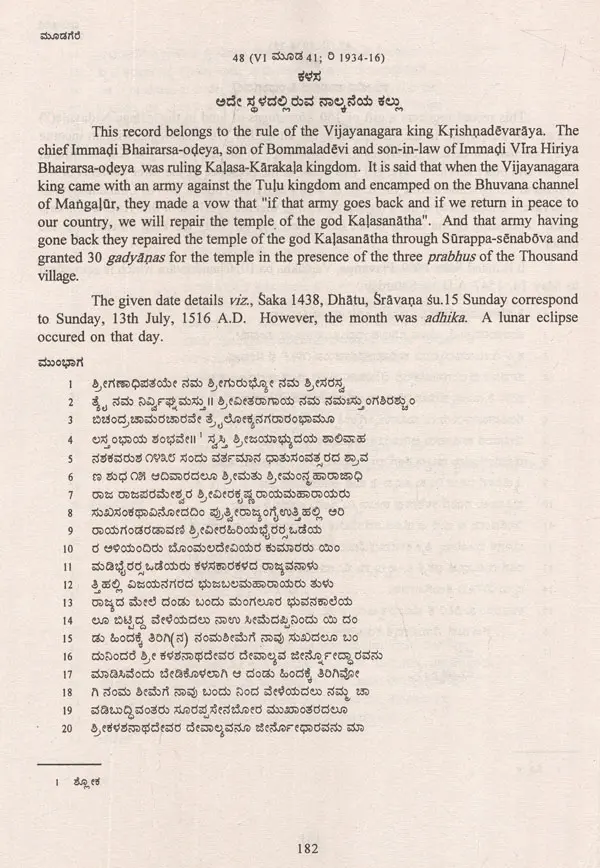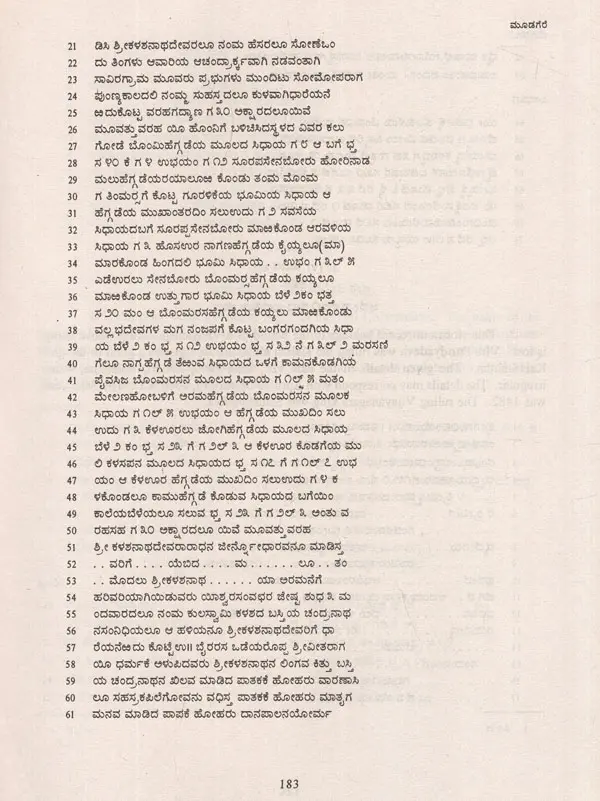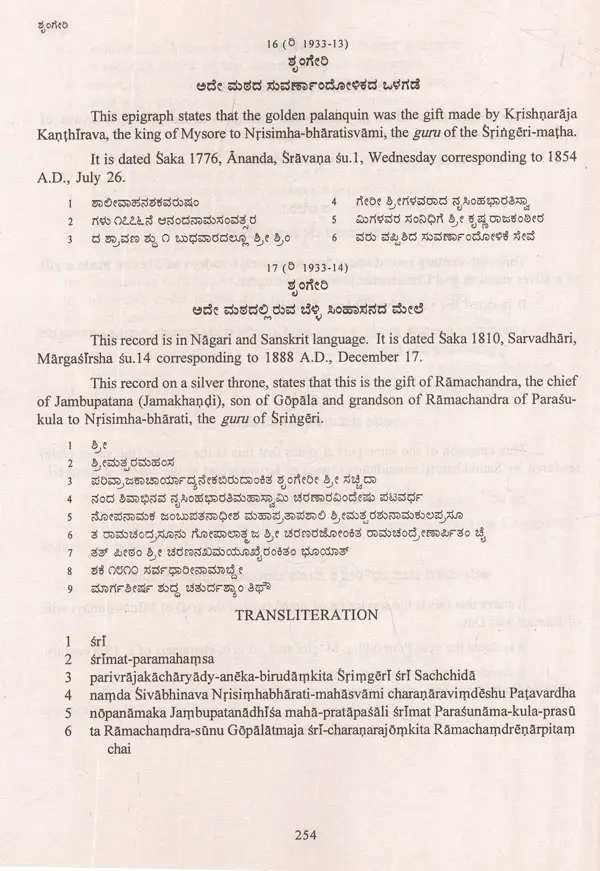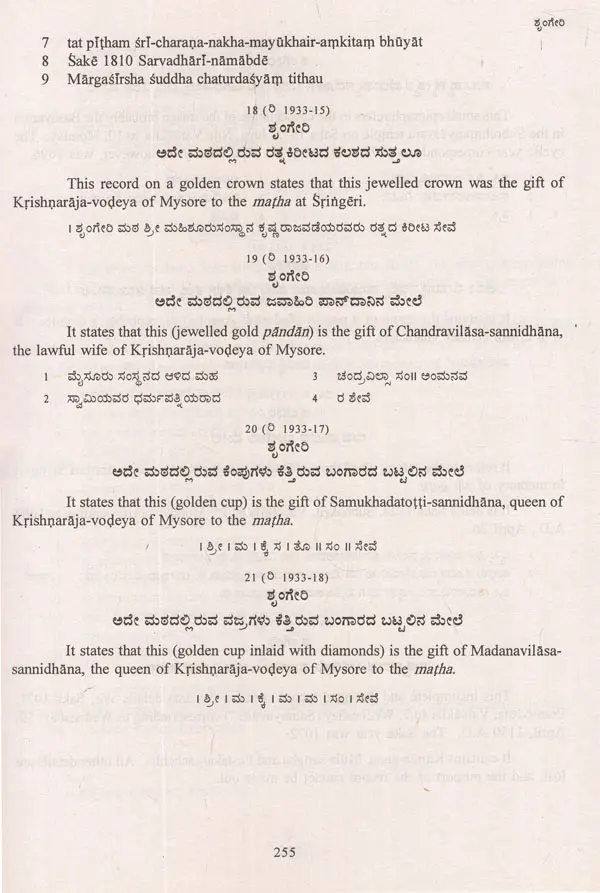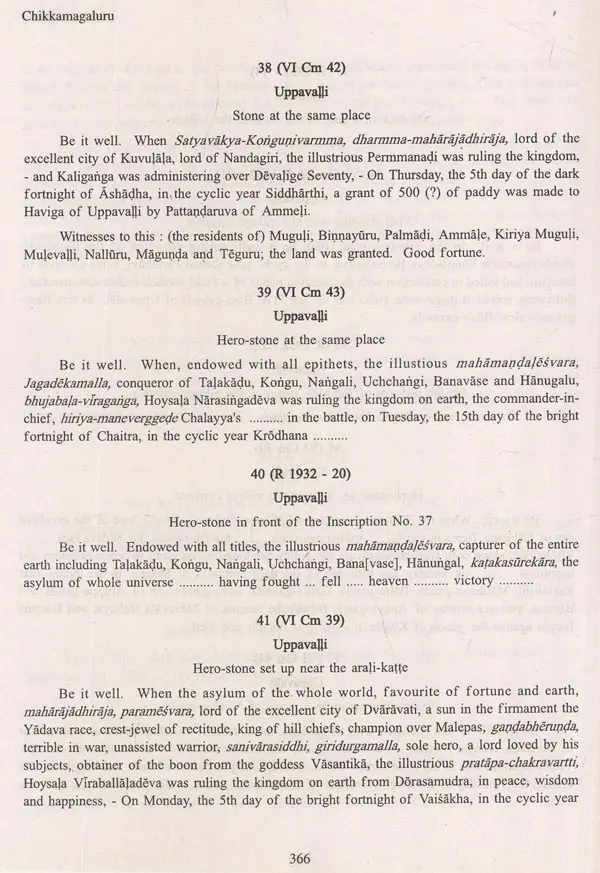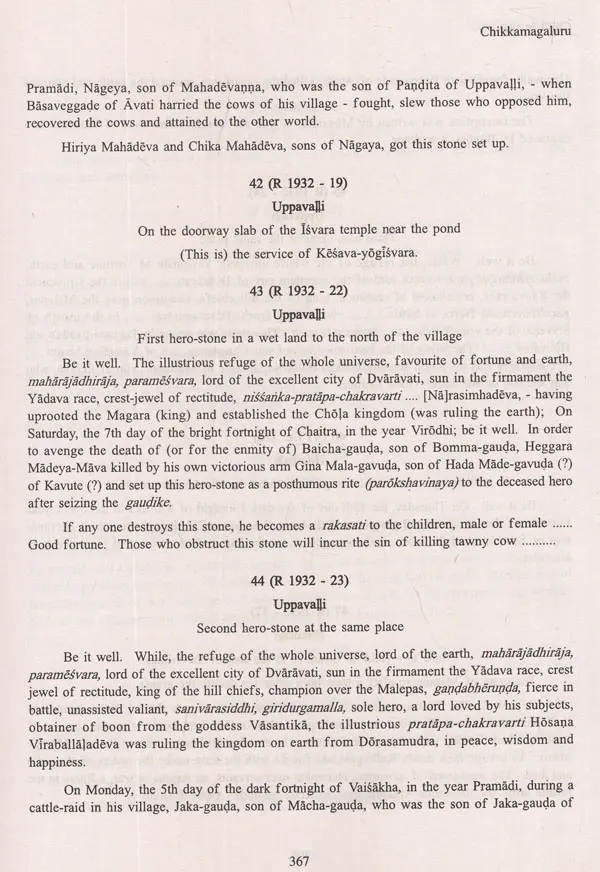
ಎಪಿಗ್ರಾಫಿಯ ಕರ್ನಾಟಿಕ- Epigraphia Carnatica- Vol-XI (An Old and Rare Book)
Book Specification
| Item Code: | UAM687 |
| Publisher: | University of Mysore, Mysore |
| Language: | English and Kannada |
| Edition: | 1998 |
| Pages: | 667 (B/W Illustrations) |
| Cover: | HARDCOVER |
| Other Details | 11.00 X 9.00 inch |
| Weight | 1.77 kg |
Book Description
The eleventh volume of Epigraphia Carnatica (revised and reprinted) relates to Chikkamagaluru, Modagere and Sringeri talaks of Chikkamagaluru District (originally Kadur District). It contains 414 inscriptions of different dynasties and covers a period from 2nd century A.D., to the end of the 19th century A.D. The next volume will cover the remaining taluks of Chikkamagaluru District. Thus the original one volume of Kadur has now become two volumes for this district, which attests to the addition of new materials to the present volume.
This volume contains inscriptions belonging to various major dynasties like the Western. Gangs of Talkad, the Chalukyas of Kalyana, the Cholas, the Hoysalas, rulers of Vijayanagara and Mysore Wadeyars. As usual there are more number of Hoysala inscriptions as compared to other dynasties. In addition, it also contains inscriptions of the feudatory families such as the Nolambas Santaras, Alupas, Taryallas, Senavaras, Belur chiefs, Kalasa-Karkala chiefs, Nandyala chiefs, Nayakas of Keladi and Jamakhandi chiefs Belur chiefs are sometimes referred to as Balam chiefs. The Santaras and the Alupas have been distinguished on the basis of the data found in their respective inscriptions. The Kalasa-Karkala chiefs have been divided as belonging to carly and later phase, on the basis of their chronology. In addition to these inscriptions, there is an early inscription on a Yupastambha which may belong to 2nd or 3rd century A.D. Its relation to any dynasty is not known. Some of the inscriptions of the Wadeyars of Mysore are in the form of labels inscribed on the gifted materials like, plates and cups etc. The three inscriptions found at Bababudangiri are in Persian. While most of the inscriptions are in Sanskrit or Kannada, only one inscription is in Telugu.
Apart from the inscriptions which are useful to the reconstruction of the political history of the region, many epigraphs throw welcome light on economic, social, religious and other cultural aspects. It is interesting to find violent boundary and land disputes culminating in the death of a person or persons. There is also an instance of an insulted person taking vengeance Data regarding the names of the coins, weights, measures, taxes, land tenures, irrigation facilities, territorial divisions, sale-deeds which are found in this volume are interesting and important to the students of economic history. An inscription refers to a Panchatantra story of a woman killing the mongoose. The marriage of three daughters of the famous Hoysala general Mariyanedandanayaka, on the same day and on the same platform has been reviewed here in detail to give a different meaning. A rare inscription refers to the transportation of the dead body of the famous Hoysala king Vishnuvardhana, from the place of his death to his native place Angadi (Sosevuru).
This volume also has inscriptions useful to the study of religions. There are many Jaina inscriptions which bring to light distinguished Jaina saints and nuns. They also mention a large number of memorial stones set up in memory of Jaina teachers. An interesting reconciliation that took place between two Virasaiva-mathas, namely Srisaila-matha and Phalahara-matha has been described in some inscriptions. Incidentally they also refer to the pontiffs of the Phalahara-matha. While Bababudangiri is sacred to the Muslims as it is associated with their saint Hazarat Hayat Mir Khalandar, it is worshipped as Dattatreya-pitha by the Hindus.
It was the practice of our ancient people to inscribe official communications of public importance on stones and copper plates so that they could be permanently visible to the public to whom they were meant. This mode brought in a type of transparency in public activities, particularly with regard to gifts of land and money. Although these communications have lost relevance now, the inscriptions are still relevant as witnesses to the transactions that took place which were of political, social, religious and administrative in nature. Historians have been reconstricting aspects of our past history based on these inscriptions Karnataka is fortunate in that these inscribed stones and copper plates were recovered in several thousands. They are being discovered even now in some place or the other. It is this rich epigraphical heritage that has bestowed Kamataka a unique place.
Mysore is well known for epigraphical research for the past several decades and the Mysore University has had a good share in it. Hence it is but natural that this onerous task of revising and reprinting Epigraphia Carnatica series was entrusted to the Mysore University by the Goverment of Karnataka The volume presently prepared is the eleventh one in that series that is devoted to the inscriptions of Chikkamagaluru, Mudagere and Sringeri Taluks of Chikkamagaluru District.
The present volume has been completed in less than a year's time. Hon. Editor, Prof A.V. Narasimha Murthy has taken great pains to complete this work with the help of Sri H.M. Nagaraja Rao, Sri K.Mohammed Shariff and Smt Krishnaveni. Dr. D.K. Rajendra, Director, Kuvempu Institute of Kannada Studies has also evinced keen interest in this publication I congratulate all these scholars and hope that the next volume would follow soon. It is gratifying to note that the Government of Karnataka under the guidance of Smt. Leeladevi R.Prasad, Hon'ble Minister for Kannada and Culture, is showing great interest in these publications. The support of the Government of Karnataka is also reflected in the interest shown by Sri A.R. Chandrahasa Gupta, Secretary to the Government and Sri Y.K. Muddukrishna, Director of Kannada and Culture I am happy to present this volume to the world of scholars in general and to that of epigraphists in particular.
**Contents and Sample Pages**
